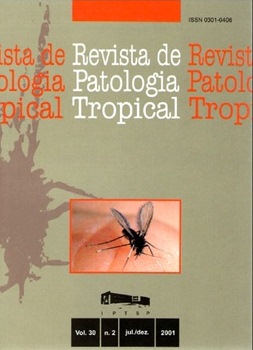Chagas disease - risk assessment by an environmental approach in northern Argentina
DOI:
https://doi.org/10.5216/rpt.v30i2.15147Resumo
Chagas' disease vector control hás been based almost exclusively on the use of insecticídes, A complemenlary control strategy highlighting en vir o n mental management hás been developed based on analysis of field data from an endemíc community in Santiago dei Estero, Argentina, High and low risk factors for human Trypanosorna cruzi infection werc identified using the Grade of Membership (GOM) model, The characterization of especially low and high-risk habitais given a highly heterogeneous endemic setting where severalenvironmental and host-related indicators were possible determinants of seropositivity rate. Number of peridomestic structures, and the household number of dogs or cats were
identified and the benefit of such an approach is that its control can be carried out at the household levei, The seropositivity rate among children ages 5-14 in high-risk habitais was 36.4%, whereas in low risk habitat it was 7.7%, This ditYerence is striking for an undemic community with no prior experience of Chagas' disease control ínterventions.
Downloads
Downloads
Publicado
Como Citar
Edição
Seção
Licença
The manuscript submission must be accompanied by a letter signed by all authors stating their full name and email address, confirming that the manuscript or part of it has not been published or is under consideration for publication elsewhere, and agreeing to transfer copyright in all media and formats for Journal of Tropical Pathology.

